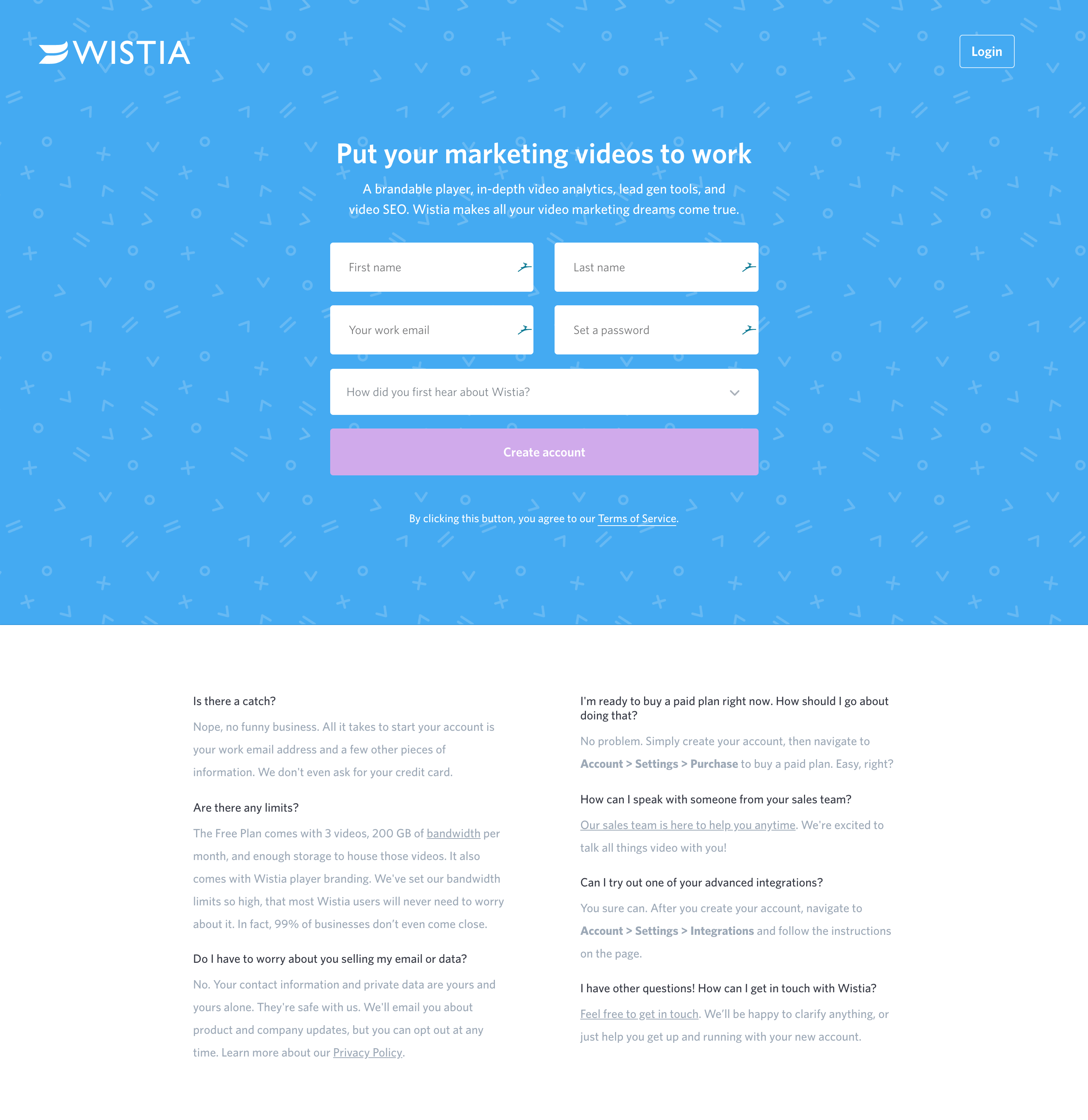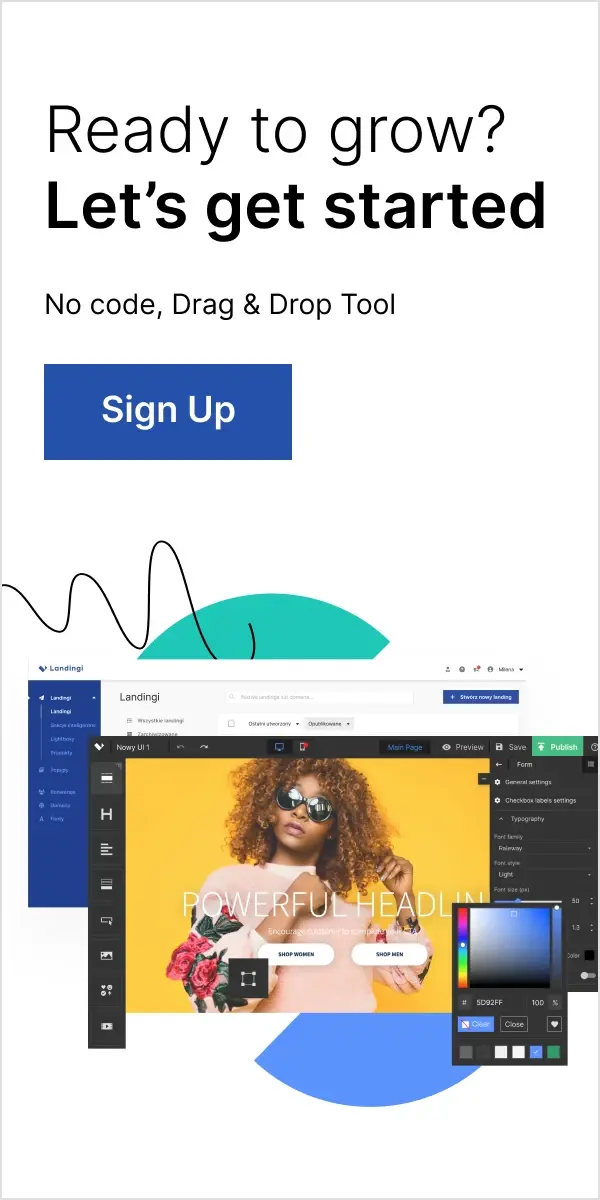How do you convince people to take positive action on your call to action?
Making sure you have all the key landing page elements is a great start. Typically, this will include:
- A great headline
- Informative copy
- Interesting visuals
- Call-To-Action (CTA)
- Social proof
1. Put your form at the top
Forms are traditionally placed at the bottom of the page on the premise that visitors will first read about the product or service and sign up once they are convinced. While that typical flow is indeed effective, try switching it up a bit.

In this great example from Wistia, the form field is in the spotlight. The form is placed right smack in the center against a bright background so that it stands out. It’s brief and short, which also minimizes possible friction visitors may have about creating an account. However, in case you want to learn more, the company does offer snippets of relevant information that you can refer to at the bottom of the page. Again, they’ve made sure it contrasts the rest of the page so the focus is still on the main goal. This helps to reassure visitors of your credibility by providing pertinent information.
2. Use a minimalist layout with striking visual elements
Great landing pages are designed to immediately communicate the benefits of your offer when visitors click on your CTA. It should answer the question of what they stand to gain by taking the time to sign up or download something.
Going with a visually interactive route to demonstrate what you mean is a great way to do that. This is especially useful for landing pages in which the action is to download an app. There are loads of landing page templates that are perfectly suited to this goal.
You can draw focus to the app name and briefly explain what it can do for visitors. Adding a gif instead of a static image to illustrate or demonstrate what you mean adds a more engaging point of visual interest, while clearly showing them the benefits.

Muzzle is a clever app with a download landing page that demonstrates this. Due to the interactive nature of their visuals, they chose to pare down on other elements to make the page less distracting.
3. Explore creative routes – not just straightforward and direct
Normally, landing pages go the straightforward route when it comes to copy. There is a very brief window of opportunity to capture your visitor’s interest and explain your offer, without them having to second guess anything.
On the other hand, if you have an opportunity to engage them with interesting, creative content, by all means, do so. A catchy headline is a great way to capture your visitor’s attention and hold their interest as well. Creatively presented information such a photo or a video work as well.
However, it must be something that’s relevant to your offer and easily understandable. Don’t make it so obscure that you leave your visitors wondering if they made it to the right page.

Industrial Health Marketing demonstrates how effective this is for their landing page. Used strategically with contrasting colors, they also manage to draw visitors’ attention to the critical elements of their landing page such as their form field and call to action.
4. Take advantage of user-oriented headlines
A relevant headline that’s concise, brief, and user-oriented can help communicate your offer directly and spur a reaction. Follow this up with a short testimonial—possibly a quote from a satisfied client or a number that demonstrates how many users use your product–—and you have a winning formula for a landing page that converts.

You can check out some great examples of Shopify landing pages that invite visitors to try out their services. By adding a relevant photo, they also manage to add visual interest to their platform while putting the spotlight on their CTA.
These are just some examples of great landing pages that take basic elements and improve on it to boost conversion potential. Review your landing page and see what takeaways from these examples can boost your page.








